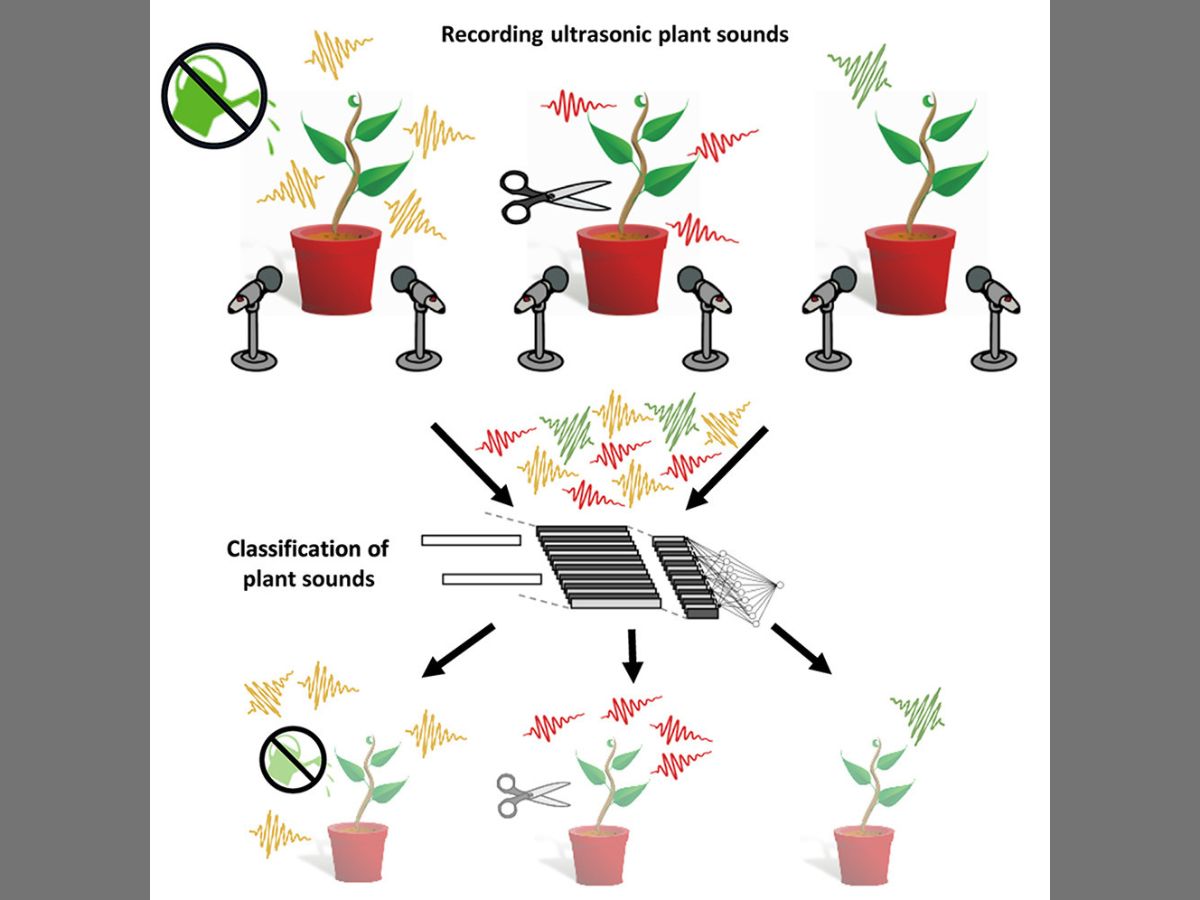Can Plants Emit Sounds? Groundbreaking Study Says Yes, Explains How: Listen In
The new study marks the first time researchers have shown that stressed plants emit airborne sounds and these can be recorded from a distance and classified.

Did you know that plants could be chatting away with humans? In a world first, a groundbreaking study has found that plants emit sounds, but humans are unable to hear them because the frequencies of the sounds are beyond the hearing range of the human ear.
The study, led by researchers at Tel Aviv University, was recently published in the journal Cell.
As part of the study, Tel Aviv University researchers recorded and analysed the sounds distinctly emitted by plants. The study said that plants emit sounds when they are under stress, for instance, if they are not watered.
Why are sounds emitted by plants inaudible to humans?
Plants emit click-like sounds, which resemble the popping of popcorn. Although the sounds are emitted at a volume similar to human speech, they are inaudible because they have high frequencies.
According to the study, plants emit ultrasonic airborne sounds when stressed, and these emitted sounds reveal the plant type and condition. One can also detect and interpret plant sounds in a greenhouse setting.
What makes the study unique?
According to the study, stressed plants show altered phenotypes, or "observable traits". These include changes in colour, smell and shape.
In the past, scientists had never investigated airborne sounds emitted by stressed plants.
The new study marks the first time researchers have shown that stressed plants emit airborne sounds and these can be recorded from a distance and classified.
What kinds of stress were the plants subject to? What were the control groups?
The two kinds of stress the plants were subject to were drought stress, which was induced by not watering the plants, and cutting of the stems. Some plants were used as control.
The team used three controls for each plant species and treatment. These were: Self-control, Neighbour-control, and Pot. 'Self-control' referred to the recording from the same plant before treatment, 'Neighbour-control' referred to the recording from an untreated same-species neighbour plant, and 'Pot' referred to the recording from a pot with soil but without a plant.
How the study was conducted
As part of the study, the researchers recorded ultrasonic sounds emitted by tomato and tobacco plants inside an acoustic chamber, and in a greenhouse, and simultaneously monitored the plants' physiological parameters.
The team constructed a reliable recording system to investigate the airborne sound emissions of the plants. With the help of this system, each plant is recorded simultaneously by two microphones.
The researchers focused on the ultrasonic sound range of 20 to 150 kilohertz.
In short, the researchers recorded plants within an acoustic box and developed machine learning algorithms to classify the recorded sounds. After this, the team tested the plants in a greenhouse, subjected them to stress, and monitored the physiological parameters of the recorded plants.
The machine learning models successfully identified the condition of the plants, including dehydration level and injury, based solely on the emitted sounds. Other organisms may be able to detect these informative sounds.
Stressed plants produced more sounds than control plants
The study found that both drought-stressed, or dry plants, and cut plants emitted significantly more sounds than plants of any of the control groups.
The dry tomato and tobacco plants emitted an average of about 35.4 and 11 sounds per hour, respectively, while the cut tomato and tobacco plants emitted an average of 25.2 and 15.2 sounds per hour, respectively. The mean number of sounds emitted by plants from all the control groups was lower than one per hour, the study said. No sound was recorded in the ‘Pot’ control.
How plant stress was identified from its sounds in the greenhouse
According to the study, plant stress can be identified from its sounds in a greenhouse. The researchers tested the acoustic behaviour of plants in a greenhouse, in the presence of many background noises that were absent in the acoustic box. These noises included wind, air-conditioning and maintenance work.
The researchers constructed a library of greenhouse noises, by recording in an empty greenhouse, in order to distinguish between the sounds generated by plants and background greenhouse noises.
After this, the researchers trained a neural network model to distinguish between these empty greenhouse noises and the sounds of dry tomatoes recorded in the acoustic box.
The models exhibited an accuracy of 99.7 per cent in a cross-validation examination.
After this, the researchers applied a trained model to another set of recordings of tomatoes in the greenhouse, and filtered out the background noises. The researchers observed that the number of plant sounds per hour of recording was highly indicative of the plant's condition.
The model distinguished the drought-stressed plants from the control plants with 84 per cent accuracy.
To summarise, a drought-stressed plant and control plant were placed in a greenhouse which already has background noises. The model, which has been trained to distinguish between the background noises of the greenhouse and sounds emitted by the stressed plants, identified the type of plant stress from the recorded sounds.
Graphical representation of the experiment

The above diagram shows a drought-stressed plant, cut plant and a control plant emitting sounds in an acoustic chamber. These sounds have been recorded by microphones, and classified by the model. The model was able to differentiate between the sounds emitted by the plants under two different stress conditions.
Significance of the study
The study is important because it opens avenues for understanding plants and their interactions with the environment, and may have a significant impact on agriculture.
The authors stated that plant emissions reported by them in the ultrasonic range of 20 to 100 kilohertz could be detected from a distance of three to five metres, by many mammals and insects, considering their hearing sensitivity. The authors also noted that they succeeded in differentiating between sounds emitted under two different stress conditions with an accuracy of 70 per cent using supervised machine learning models. They were also able to distinguish between drought-stressed and control plants in a greenhouse, based solely on the sounds they emitted.
The authors also found that the sounds emitted by the plants at high and low levels of dehydration are different.
According to the study, airborne sounds emitted by plants can trigger a rapid response in nearby organisms, including both animals and plants, which, if capable of hearing the sounds, can use them for their own benefit.
The emitted sounds contain information about the physiological state of the plant, and this can have direct implications for plant monitoring in agriculture.







































